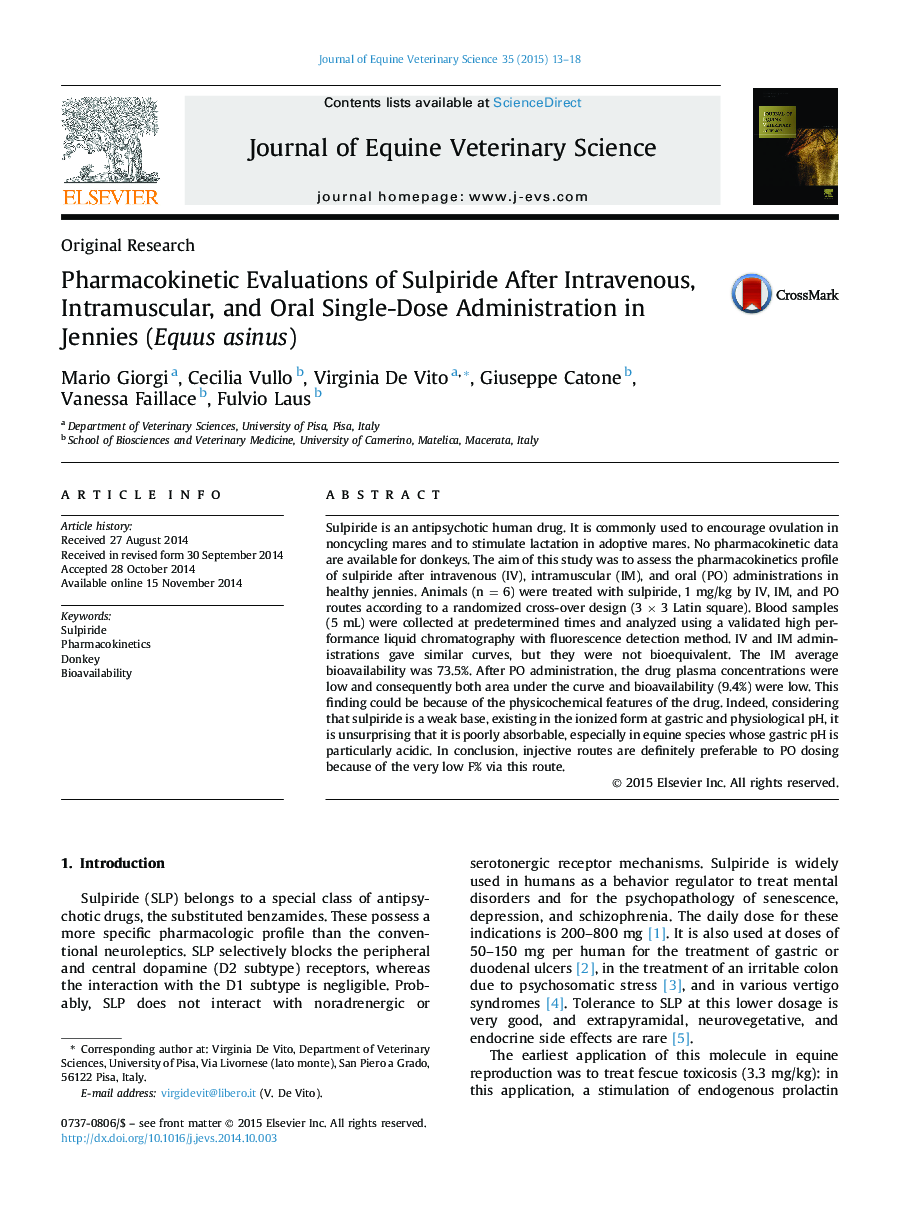| Article ID | Journal | Published Year | Pages | File Type |
|---|---|---|---|---|
| 2395021 | Journal of Equine Veterinary Science | 2015 | 6 Pages |
•Sulpiride is used to induce lactation or to hasten the first ovulation of the breeding season in mares.•IV and intramuscular pharmacokinetics were similar but not bioequivalent.•The oral bioavailability was low 9.4%.
Sulpiride is an antipsychotic human drug. It is commonly used to encourage ovulation in noncycling mares and to stimulate lactation in adoptive mares. No pharmacokinetic data are available for donkeys. The aim of this study was to assess the pharmacokinetics profile of sulpiride after intravenous (IV), intramuscular (IM), and oral (PO) administrations in healthy jennies. Animals (n = 6) were treated with sulpiride, 1 mg/kg by IV, IM, and PO routes according to a randomized cross-over design (3 × 3 Latin square). Blood samples (5 mL) were collected at predetermined times and analyzed using a validated high performance liquid chromatography with fluorescence detection method. IV and IM administrations gave similar curves, but they were not bioequivalent. The IM average bioavailability was 73.5%. After PO administration, the drug plasma concentrations were low and consequently both area under the curve and bioavailability (9.4%) were low. This finding could be because of the physicochemical features of the drug. Indeed, considering that sulpiride is a weak base, existing in the ionized form at gastric and physiological pH, it is unsurprising that it is poorly absorbable, especially in equine species whose gastric pH is particularly acidic. In conclusion, injective routes are definitely preferable to PO dosing because of the very low F% via this route.
